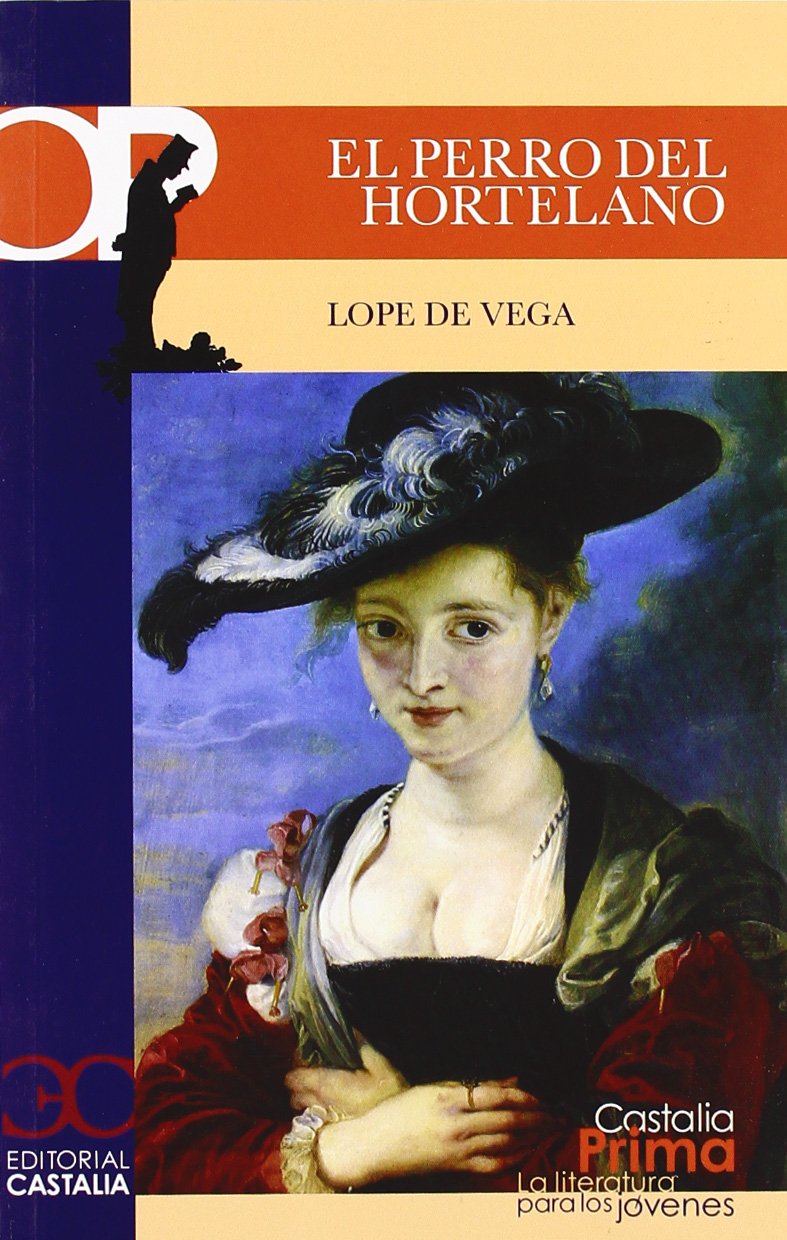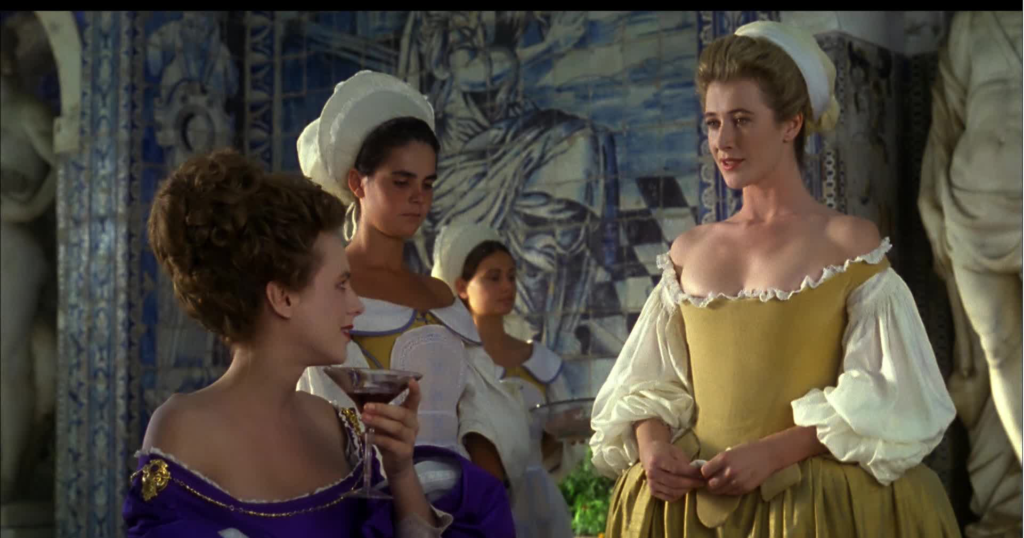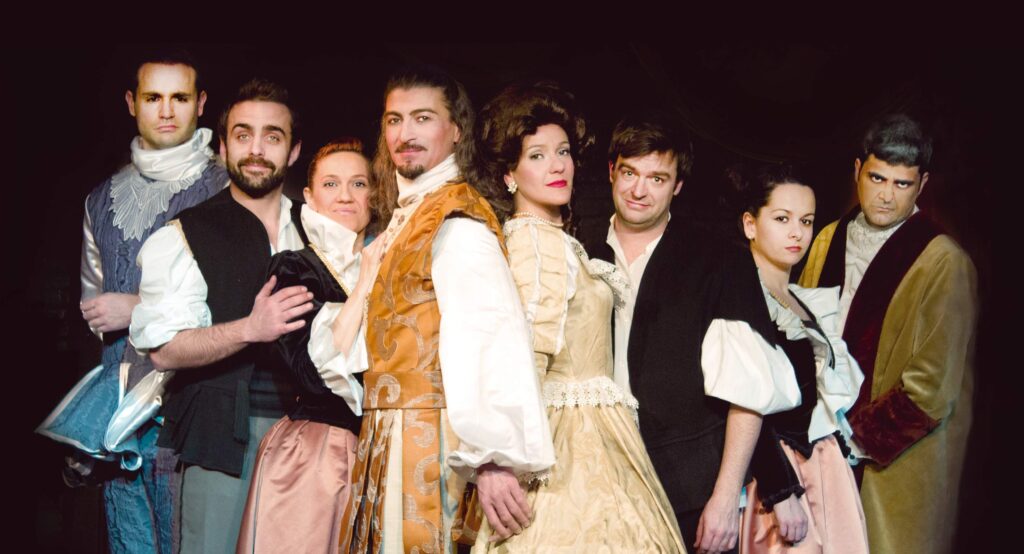The work entitled El Perro del Hortelano It is a comedy framed within the theatrical subgenre of the Spanish Golden Age, which is born from a linguistic expression typical of Spain. It was shaped by the literary Lope de Vega. It is worth entertaining yourself with this type of reading.

Summary of The Dog in the Manger
El perro del hortelano, is a funny play, classified within the palatine comedy, which is a theatrical subgenre belonging to the Spanish Golden Age. It is a literary comedy Lope de Vega, published in 1618 in Madrid.
Many will wonder where that title The Dog in the Manger comes from. It simply comes from a linguistic expression "Being like the dog in the gardener, who does not eat or let eat", in addition to this he continues with his colloquial expressions, being that the dog is a particularly carnivorous animal, which does not like to eat vegetables from the harvest of his master, but he does not allow the other animals to swallow them either.
It is from this sentence that the work begins, translating a countess named Diana, who cannot love Teodoro, but neither allows him to be loved by any other woman. Likewise, we recommend reading The Knight of Olmedo
The comedia
The dog in the manger begins once Teodoro and Marcela are placidly talking on the terrace of the majestic castle, owned by Countess Diana, in Miranda, Naples. Meanwhile, Tristán is in charge of guarding the entrance to the castle gate. In one of those he sees Fabio approaching, then between Teodoro and Tristán they throw Fabio who rolls spectacularly down the stairs, and the two escape.
The countess, suspecting that someone has entered, approaches the place. She immediately proceeds to gather all the domestic staff, and asks questions about what is happening, to which Aranda replies that there is an affair between Teodoro and Marcela; once Diana asks Marcela the question, she answers that it is true, but, in order not to make Teodoro and her look bad, she argues that they have already discussed getting married.
Countess Diana approves of their love affairs and they decide to get married, although the truth is that she is out of love with Teodoro and feels strong jealousy of Marcela. Diana takes advantage of the moment to write a love letter, pretending to be a friend of hers, and she gives it to Teodoro, begging him to respond at once.
The servant, seeing that he has great chances with the countess, refuses Marcela, who joins Fabio to take revenge on him. On the journey of a few days, the countess still gives herself the luxury of rejecting Teodoro, while she receives her new lovers: Count Federico and Marquis Don Ricardo, in order to choose who would be Teodoro's husband. her.
Teodoro, angry at the fact of rejecting Diana without any cause, intends to return to Marcela, who also rejects him claiming that it is late because she is linked to Fabio. However, both end up reconciling, while Countess Diana is watching him. Diana is again attacked by jealousy, and talks alone apart with Teodoro, and shows him her love for him, (which she feels ashamed of, because he is not of the aristocratic class and is a dishonor to her). vogue).
Once the talk is over, Teodoro talks with Marcela to announce that Diana approves of her marriage to Fabio, so it must go ahead. Marcela knows that he does not love the countess, that he only loves her.
A few days later, Diana does not accept and rejects the Marquis Ricardo, while Teodoro talks with Diana to ask her not to give him false expectations, and returns with Marcela, that was what the countess wanted to avoid.
But, Ricardo and Federico, realize the feelings and how in love the countess was with Teodoro, and the fact that he does not belong to the nobility, they ask Tristán to murder him, and then they negotiate the payment.
But, it happens that he goes and tells absolutely everything to his master, while they devise a way to help him. They prepare a plan that is to visit Count Ludovico, who lost his son named Teodoro a long time ago, and pass Teodoro off as his own son, in order to pretend that he belongs to the aristocracy and marry the countess. .
What was planned is consummated, Tristán goes to Count Ludovico, he invented such a story. The Earl is pleased to look again at his apparent son in Belfor County. Teodoro receives a visit from his alleged father, which leaves everyone amazed.
Teodoro, belonging to royalty, makes it possible for him to marry Diana, which is consolidated, and they go with their "father", after Teodoro definitively refuses Marcela, who is forced to marry Fabio. .
Interpretations
The professor of Spanish literature, Marc Vitse, a French hispanist, considers the work that can be read as a private comedy, which translates drama, but it causes laughter. Since the character of the secretary manifests himself to an event as typical of César Borgia, a noble Valencian politician, and accommodates himself to events in the same way as a prince to changes in Fortune, in fact he makes his own the famous expression of Cesar Borgia: "Either Caesar or nothing«.
So, in the case that concerns us The Dog in the Gardener, the matter of love must also be qualified that Diana represents something simple to achieve the county of Belflor.
Characters involved
Now we are going to proceed to talk about the characters that participate in the play. Lope de Vega, usually personified his characters to be part of high society, taking into account the characters that belong to the aristocracy such as Countess Diana, Marquis Ricardo, Count Federico and Count Ludovico, while that the commoners are the other characters.
Next we begin to mention the protagonists involved in the famous comedy.
Diana, Countess of Belflor or Lady
She is a cold and calculating lady, malevolent, selfish and fearful and inept in showing her emotions and feelings.
Teodoro
He is the one who works as Diana's secretary or servile, has an indecisive personality, but takes advantage of others. He benefits from women to achieve his goals.
Tristán
He is a man of cheerful and funny character, prudent and reserved, but with great ability, he is Teodoro's best friend, as well as his domestic. He prepares a fantastic plan to support and benefit Theodore's existence, marrying Countess Diana.
Fabio
Diana's Domestic
Marcela
Lady in the service of Countess Diana, and Teodoro's girlfriend, who separate and return to their love affairs, motivated by the changes presented by Countess Diana.
Ricardo
He is one of the marquises who feels love for Countess Diana, however, he discovers that Diana wants to give her love to Teodoro, so Ricardo decides to ask a person to kill him, however, his wishes and the plan fail.
Federico
Another of the counts who tried to conquer the love of Countess Diana.
Ludwig
He is the count who lost (by disappearance) his only son, when he was a child, and who is easily mocked by Tristan, because he pretends to be a Greek businessman, who bought a slave named Theodore, who apparently is his son, however everything is a farce, so that Teodoro the character, will become the son of a count, and get married with the countess Diana.
Anarda
Another maid of Countess Diana
Octavio
He is the one who works as a butler in Countess Diana's castle.
Celio
Another of the servants
Featured Representations
This attractive comedy known as El perro de hortelano, enjoys various representations, such as:
1618: His debut in Madrid
1806: Coliseum of the Cross, Madrid
1808: Caños del Peral Theater, Madrid. Performances by: Manuela Carmona, Juan Carretero, María Dolores Pinto, Josefa Virg, Antonio Ortigas, Mariano Querol, Antonio Soto.
1931: Spanish Theater, Madrid. Interpretations: María Guerrero López, Fernando Díaz de Mendoza and Guerrero.
1962: Spanish Theater, Madrid. Spanish Theater Company, under the direction of Cayetano Luca de Tena. Set art by: Emilio Burgos. Performances by: Carmen Bernardos, Armando Calvo, Miguel Ángel, Mary Paz Ballesteros, Maite Blasco, Jacinto Martín.
1966: Spanish Television. Studies 1 and 2. Under the direction of: Pedro Amalio López. Interpretation: Mercedes Barranco, Fernando Delgado, Julia Trujillo, Irene Daina, Concha Leza.
Film adaptations
In the year 1977, with film arrangements by Yan Frid.
In 1996, with film productions by Pilar Miró.


